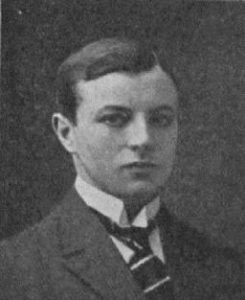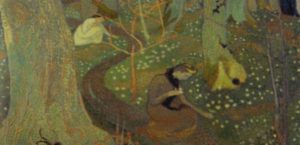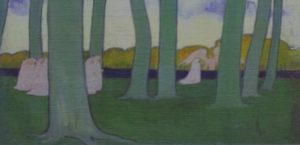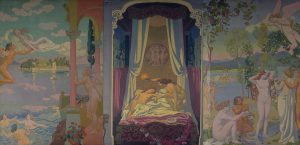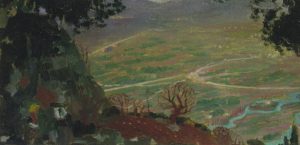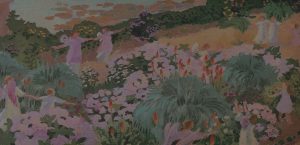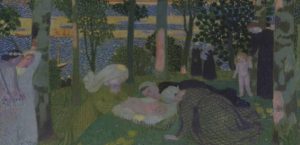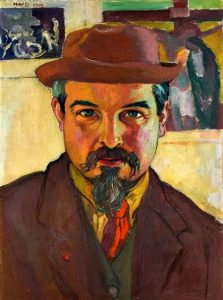Maurice Denis was born on the 25th of November in 1870 in Granville, France.
1870 - 1943
Maurice Denis
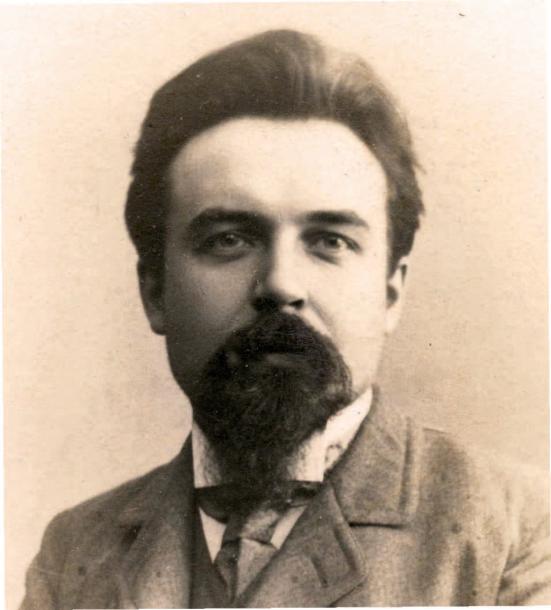
description
A French artist, one of the founders and theoreticians of the Nabi group (from Hebrew “The Prophets”).
Was born into the family of a railway employee and a milliner. Soon the family moved to Saint-Germain-en-Laye near Paris. The future artist studied at the Lycee Condorcet.
In accordance with the ideas of this art movement, Denis created canvases, distinguished by the simplicity of forms, the softness of lines and rhythm. The artist aspired to the revival of religious art; many of his paintings are filled with Christian meaning and themes. Maurice Denis was engaged in applied art, painted walls, created stained-glass windows, often worked with graphics and book illustrations. He outlined his understanding of art in several works, such as The Theories, The New Theories, and The History of Religious Art. His writings had a significant impact on young artists of subsequent decades.
Key ideas:
– The creativity of Maurice Denis gravitates toward religious art, and his paintings are similar to icons or paintings in churches. Comrades of the artist in the group Nabi even nicknamed him “Nabi of beautiful icons” for the simplified and slightly archaic manner of painting.
– Early works of Denis, especially those created in the period after the marriage, are distinguished by a special intimacy and charm. In paintings, a model for which very often was artist’s wife Marta, there is a restrained color palette and soft light.
– The late works of the master are distinguished by great monumentality and the sequence of plots. Over the years, Denis’ art becomes more traditional and more decorative; it is imbued with obscure religious, and even mystical moods. The artist creates large compositions – wall paintings in cathedrals, theaters and other buildings. He paints stained glass, decorative panels and theatrical scenery.
– The main idea of the artist’s work is the desire to express ideas and feelings with the help of plastic signs and pictorial means. Denis emphasizes the dominance of the spiritual over the material, and of the content over the form. In the canvases of the painter, the viewer sees an indivisible connection between the pictorial language and the state of the soul. His paintings, though often showing everyday life, are always marked by the presence of high spirituality and purity.
1870
1888
1890
1891
1903
1908 - 1909
1913 - 1917
1919
1924
1932
1943
The birth of the artist
Entered the Academy of Julian
Entered the Academy of Julian, and then the School of Fine Arts. During his studies, he got acquainted with the works of Paul Gauguin, which conquered the young artist. He worked in various fields, made sketches for carpets, cardboard for mosaics and stained glass.
Became one of the creators of the Nabi group
Became one of the creators of the Nabi group. All his fellow artists became members of this association. Among them, the most famous were Pierre Bonnard, Paul Sérusier and Eduard Vuillard.
"Impressionists and Symbolists"
Participated in the exhibition, which took place at the gallery of Lebark and had the loud name “Impressionists and Symbolists”. He painted plafonds in the house of musician Chasson, created the series of panels “The Legend in St. Hubert “and much more. Denis’ painting of 90-ies is fresh and original. The artist received many orders and gradually became famous.
He visited Germany
He visited Germany with Sérusier, where he studied the secrets of Benedictine art.
Created “The History of Psyche"
Created “The History of Psyche” – a series of monumental panels – and visited Moscow to personally establish these works on the site determined by the customer.
He decorated the ceiling of the theater on the Champs Elysees
He was mainly engaged in making frescoes of buildings. He decorated the ceiling of the theater on the Champs Elysees, created compositions for the Saint-Paul Church in Geneva.
He founded the Workshop of the church art
He founded the Workshop of the church art.
Painted the dome of the Petit Palais
Painted the dome of the Petit Palais, and four years later – a plafond over the staircase in the Senate building in Paris.
The artist was awarded the title of the academician of painting
The artist was awarded the title of the academician of painting.
The death of the artist
He died on the 13th of November in 1943 in Paris.


